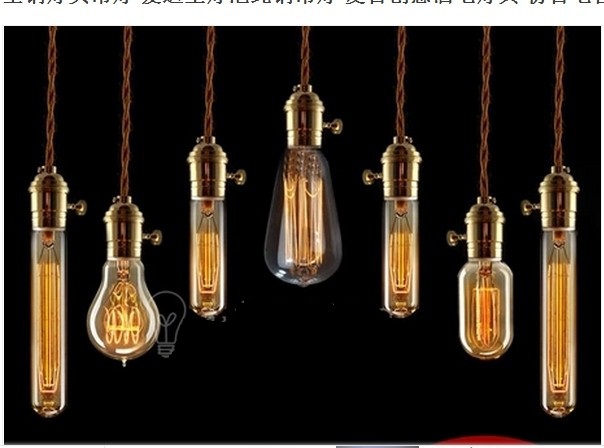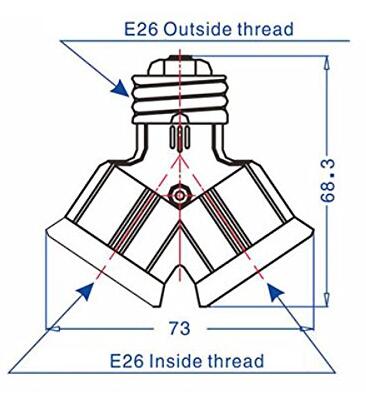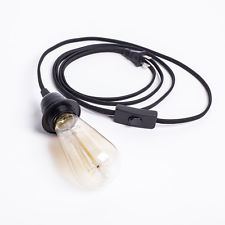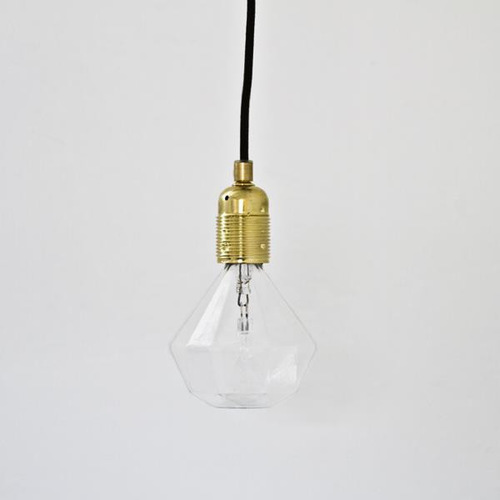Every day, we rely on our lighting fixtures to provide us with the illumination we need, yet we rarely consider the complexities behind their design and function. A particularly intriguing aspect is the nomenclature used for lamps, specifically the E26 and E27 lamps. But what exactly is the difference between these two types?
The main difference between E26 and E27 lamps lies in their base dimensions, specifically the diameter of the screw base. E26 stands for 26mm and E27 stands for 27mm. The difference is small, but it can influence which lamps and fixtures are compatible with each other.
In the ensuing discussion, we will further explore these two types of lamps, their applications, compatibilities, regional differences, and safety considerations. Light up your knowledge with us!

How are E26 and E27 lamps used?
While E26 and E27 lamps differ slightly in size, their usage is almost interchangeable. Both types of lamps are commonly found in residential, commercial, and industrial lighting setups.
E26 lamps are primarily used in North America, while E27 lamps are common in Europe and other parts of the world. They can be used in a variety of fixtures, from desk lamps to overhead lights, making them versatile choices for lighting needs.
Are E26 and E27 lamps compatible with each other?
The one-millimeter difference between E26 and E27 lamps might seem insignificant, but it can impact compatibility. E26 lamps can generally fit into E27 fixtures and vice versa, but the fit might not be perfect.
While it’s often possible to screw an E26 lamp into an E27 socket (and vice versa), the connection may be less secure, potentially leading to issues over time. It’s always best to match the lamp base size to the socket size for optimal performance and safety.

What are the regional differences?
The choice between E26 and E27 lamps is largely influenced by regional standards. In North America, the E26 base size is the norm, while in Europe, Asia, and other parts of the world, the E27 is more common.
These standards reflect the specifications set by different regulatory bodies. Regardless of the region, it’s always important to choose the appropriate lamp base size for your specific fixtures.
How does safety factor in?
Safety is a crucial consideration when it comes to any electrical component. While it might be tempting to use an E26 lamp in an E27 socket (or vice versa), doing so could pose a safety risk.
Mismatching lamp and socket sizes could lead to an insecure connection, potentially causing the lamp to loosen over time. This could lead to electrical arcing, a serious safety hazard. So, even though the size difference is small, sticking to matching sizes is always the safest choice.

How to choose between E26 and E27?
When choosing between an E26 and E27 lamp, there are a few factors to consider. One of the most important is the type of fixture you have and where you live, as this will often dictate the base size.
The type of illumination you need, the aesthetic design of the lamp, and the energy efficiency of the bulb are also factors to consider. At James Lighting, our team can guide you through the process, ensuring you select the best lamp for your needs.
What are some alternatives?
While E26 and E27 lamps are common, they are not the only options available. Other base sizes, such as E12 (candelabra base) and E17 (intermediate base), are also available.
The choice between these different lamp types depends on the specific needs of your lighting setup. James Lighting offers a wide range of lamp types, ensuring you can find the right lighting solution for your project.

Conclusion
Understanding the difference between E26 and E27 Bulbs is crucial for choosing the right lamp for your lighting fixtures. Even though the size difference is small, it can impact compatibility, safety, and performance.
Whether you’re lighting up your home, office, or a larger commercial space, James Lighting is here to help you navigate these considerations and find the perfect lighting solutions for your needs. Remember, when it comes to lighting, every detail matters—even down to a single millimeter.
